Hair restoration methods have come a long way since the invention of hair plugs, the primitive form of hair transplants.
Today, with new hair transplant techniques such as FUT and FUE, individual hair follicles can be planted in the bald areas of the scalp to restore a natural hairline.
However, as technology and medical practices get better each year, new and improved techniques and modifications are developed. One of these developments came in the form of DHI, offering an improved process compared to other hair transplant procedures in some ways.
TL;DR
➡ DHI is an advanced FUE technique for hair transplantation where individual hair grafts are implanted directly with need.
➡ As an FUE technique, it is excellent at covering linear scars created by this method’s surgery while offering more precise results than FUT.
➡ Despite being much more effective, FUE is a complicated method for surgeons. Its slower and more careful process creates more hours of operation with more errors.
➡ DHI is a straightforward solution for compensating the weaknesses of FUE, which directly increases its price with a range of $3050-$21,000.
In this article, I’ll explain what DHI is, how it’s done, its benefits, and the side effects to answer every question you might have before choosing this hair transplant method.
Table of Contents
What Is a DHI Hair Transplant?
Direct Hair Implantation, also known as Direct Hair Transplantation or DHI, is an advanced FUE where individual hair grafts are implanted directly, needing pre-made incisions. Implanter pens, also called DHI implanters, are used in place of medical forceps to implant hair follicles directly into the scalp.
Equipment Used for Hair Transplant Surgeries
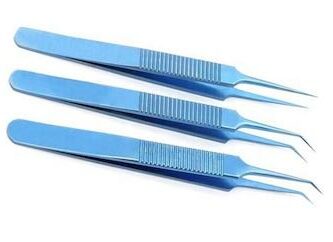
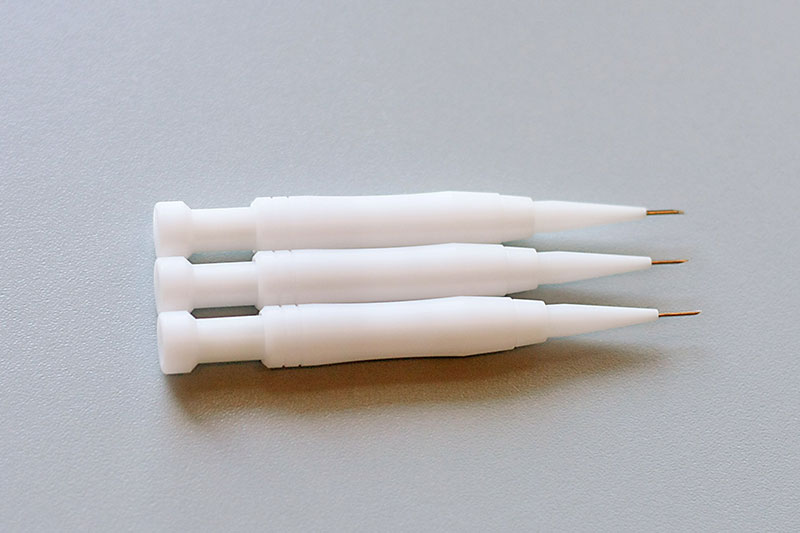
Although there is limited research proving DHI is directly more effective than a regular FUE surgery, most surgeons, including myself, are almost certain it fixes many complications and flaws of FUE.
How?
Let me explain:
Background
Follicular Unit Extraction (FUE) is a hair transplantation technique developed in the 1990s and became popular in the 2000s. It replaced hair plugs and Follicular Unit Transplantation (FUT) Surgeries that followed it in most clinics simply because it offered more precise results without the linear scars created by the FUT method.
But FUE isn’t perfect, too.
It requires a great amount of focus and precision by the surgeon, who should be an expert with years of knowledge to operate with maximum success.
Incision and Implanting in Two Separate Steps
In FUE surgery, the surgeon first extracts hair grafts one by one from the donor area, and during this part, extracted grafts are stored in a proper liquid. Once the harvesting is done, they move on to implants.
The surgeon implants each hair follicle into a small incision they’ve made in the bald area, making it a 2-step task that can produce errors.
The incision and implanting are two different stages, which means that the surgeon has less angle and depth control over the implantation, which could make the surgery less effective than it could be.
These risks can be reduced significantly if diligent work is done in FUE operations.
DHI indeed excels in angle and depth control, but it becomes riskier, especially in the hands of people with little experience and who are trying to perform in a hurry.
The Issue With Having Full Control
Also, the forceps used during the traditional FUE surgery need to be operated on with great care since the hair follicle is not fixed on the device and is held by the surgeon’s grip. However, if you’ve carefully selected your clinic to work with an expert dermatologist surgeon, hours of operation increase the chance of errors.
To fix all these problems, the DHI Global Medical Group invented the DHI modification to FUE, using the special DHI implanter to provide surgeons with more control and reduce the risk of errors. DHI has become more and more popular since it is believed to improve the graft survival rate by fixing the flaws of the FUE technique.
What Does the DHI Process Look Like?
As I’ve mentioned, DHI is a modification of FUE, so the process is pretty much the same as FUE except for the implantation stage of the surgery.
Still, let’s go over the process and what the road ahead might look like for you if you choose DHI:
Pre-Surgery
You’ve seen a few signs of balding and are now sure you have hair loss, maybe even female or male pattern baldness. So, you’ve scheduled an appointment with a hair transplant surgeon (preferably a dermatologist to make sure you’re getting the correct diagnosis and long-term holistic treatment).
With the examination, your pre-transplant phase begins. Your physician suggests a DHI hair transplant as a viable option, and you can have the operation soon.
So, you turn up to the clinic on the operation day, and the process begins.
First, your physician explains the next steps regarding surgery and post-surgery care. Then, together with your physician, you decide on the desired hairline.
Your hair is then trimmed, your new hairline (and the donor area) is drawn on your scalp, local anesthesia to numb the area is applied, and you take your place on the operating table for the next 6-8 hours.
You can also request to get fully sedated for the process, which will cost extra in almost all clinics.
Surgery
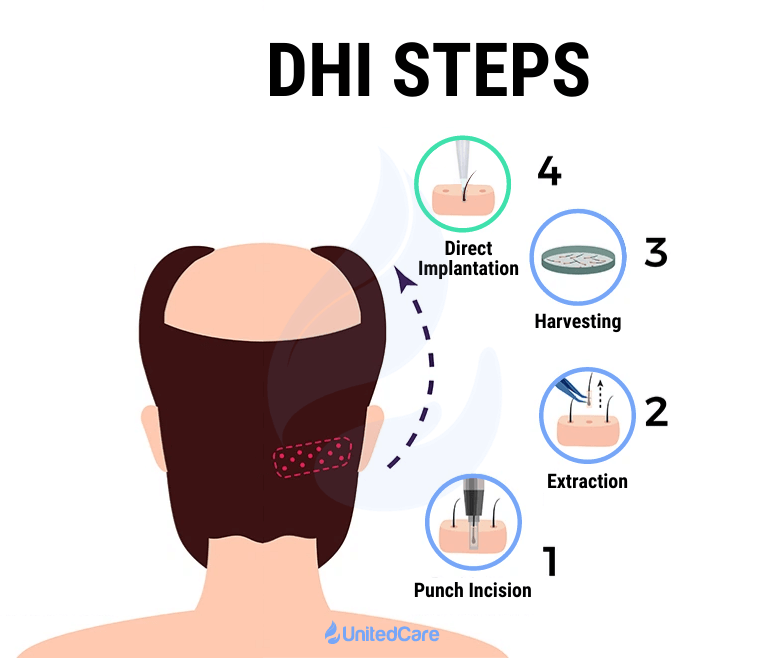
The first step of the surgery is graft harvesting. The surgeon extracts hair follicles individually from the donor area, leaving minimal scarring that quickly heals.
The harvested grafts are stored in a proper liquid until the implantation step.
Once the harvesting is done, the DHI implanter is prepared for operation, and the implanting step begins. Using the implanter pen, the surgeon places hair grafts into the bald areas of the scalp one after another, slowly restoring your hairline and covering the bald areas.
After hours of operation, the surgery is done, and your physician applies a bandage to the donor area of your scalp, so you’re done for the day.
Post-Surgery
A day after the surgery, you’re asked to come in for the first wash. Your bandaging is removed, and your scalp is examined before the medical team washes your hair as they provide you with further instructions.
Suppose you’ve selected a clinic and a physician that has adopted a holistic approach to hair transplantation, like UnitedCare. In that case, your physician will provide you with everything you need to do and not do for the following period and will check in with you monthly.
You should expect a complete recovery and a natural look 9-12 months after the surgery if everything is done right.
Is DHI Hair Transplant permanent?
Yes, DHI hair transplants are permanent, and they shouldn’t go away ever.
The transplanted hair is directly harvested from your scalp’s “safe donor areas,” which are practically immune to DHT and, therefore, pattern baldness.
So you can expect to keep your transplanted hair for a long, long time after the operation.
DHI Hair Transplant Costs
DHI costs more than both FUT and FUE surgeries, with a pricing range varying between $3050-$21,000, depending on the clinic’s location and quality.
In the USA, the average cost of a DHI hair transplant is around $6 per graft.
In the United Kingdom, the average cost for a DHI is around £3 per graft.
For most European countries, the pricing range is around €3 per graft.
In Turkey, you can get a 3500 graft DHI hair transplant for an average of €3000.
Benefits and Risks of DHI Hair Transplant
As with any medical procedure, DHI surgeries come with their benefits compared to other methods and general risks and side effects.
So, here are the benefits as well as the risks of DHI (Direct Hair Implantation):
Benefits
✅ Provides more quality implantation by giving the surgeon more angle and depth control.
✅ Reduces the risks of error by stabilizing the implantation process.
✅ Leaves minimal to non-visible (by the eye) scars on both the donor and recipient areas.
✅ Improved recovery duration; it takes a few days to return to normal activities.
✅ Less pain after surgery, greatly improved compared to FUT.
Risks
These are the most common complications that can occur with any technique.
The frequency and severity of these complications in DHI are generally low compared to other techniques.
🟥 Hair transplant infections appear in 1% of the hair transplant patients following surgery. These are easily treated with topical or oral antibiotics.
🟥 Shock loss 3-6 months after the surgery. Almost all patients who experience shock loss regrow their lost hair.
🟥 Bleeding on the recipient or donor area may happen due to a number of reasons. Generally, it doesn’t require any intervention. However, you should see your physician if the situation persists.
🟥 Swelling and hair transplant scabs are completely normal up to 7 days after the operation.
🟥 Numbness on the scalp can last for about a month following the operation.
🟥 Redness and reddish skin are typical side effects of hair transplantation that can last around a month.
🟥 Pain up to 3 days after surgery is normal. If the symptoms persist, consult your physician.
How effective is DHI?
We have limited clinical research that specifically focuses on the effectiveness of DHI. Instead, most surgeons accept the research-documented effectiveness of FUE as DHI is an improved version of it.
Still, we were able to collect some research focusing on DHI entirely:
A 2024 study made on four different patient groups
🔵 In 2024, a group of plastic surgeons conducted a clinical study on four different patient groups with early stages of balding (The Norwood Scale, Class 1) to test the implantation needle used in DHI surgeries.
🔵 Groups were separated based on the planting tools used. While one group had the implantation needle, the other groups were equipped with ordinary methods such as punching tools or ordinary injection needles.
🔵 The implantation needle created much faster (almost twice as much) and more accurate results in its group compared to punching tools or ordinary injections.
💡 In the own words of the researchers:
“It has a faster planting speed and does not require assistance.”
A 2013 made on 29 random patients
➡️ In 2013, a group of dermatologists conducted a study on the efficacy and feasibility of DHI.
➡️ 29 male patients (ages ranging from 21 to 66 years) were randomly selected and assigned to treatment with DHI.
➡️ 26 patients had androgenetic alopecia, 1 patient had traction alopecia, and 2 patients had scarring alopecia.
➡️ Out of the entire group, 27 patients showed ‘good’ results, whereas 2 patients showed ‘poor’ results.
💡 In the own words of the researchers:
“DHI significantly reduces time compared to FUE and thus minimizes the physical handling. Although it may appear slightly more difficult and longer procedure in the beginning, with more practice and expertise, it may take less time and turn out to be easier.”
Is DHI Worth it?
So, the question is, is DHI worth it?
My professional opinion: Yes, it is completely worth it.
Hair transplantation is a surgical procedure that has multiple variables affecting its success. If you can make sure each of these variables is set right, for example, using an implanter pen to make the process easier and more precise, you’ll be more likely to succeed.
And don’t forget, the cost of a failed hair transplant can end up being higher than the original surgery.
So, your question should be: Where can I find the right clinic for a DHI hair transplant?
Choose the right clinic equipped with DHI.
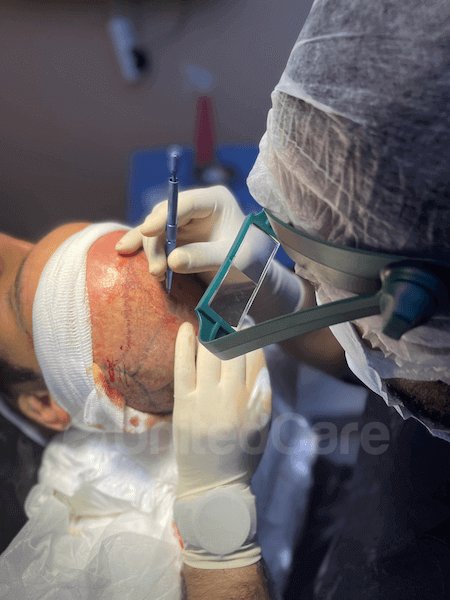
At UnitedCare, we begin your hair transplant process by offering you a free one-on-one consultation with our expert doctors to determine your suitability.
💊 If so, our holistic approach provides advanced technologies and bio-enhancements to ensure you do not need another surgery.
Once you have decided on a method, we begin the treatment with the utmost attention. 💉
But most importantly, we stay in contact with our patients even long after the surgery, ensuring that your transplant becomes permanent. 🍀
Affordable hair transplant costs, a holistic approach, and experienced dermatologists on-site are here to provide you with the right solution.
Ready to begin the journey? Click here to reach out for a FREE consultation:
You can restore your natural look with a dermatologist right now:
UnitedCare‘s expert dermatologists provide you with a holistic approach to DHI surgeries.
Frequently Asked Questions (FAQs)
Is DHI hair transplant safe?
A DHI surgery is much safer than the traditional FUE and FUT surgeries since it allows the surgeon to have more control and minimizes any errors. Most expert surgeons agree that DHI is a superior method that improves chances of success.
Is a DHI hair transplant painful?
Compared to other hair transplant techniques, DHI hair transplant might be less painful. You can experience mild pain 3 days following the surgery, for which your physician will prescribe a painkiller so you don’t feel any aching or burning sensation on your scalp.
How much does a DHI hair transplant cost in Turkey?
On average, the cost of a DHI hair transplant for 2000 Grafts in Turkey is €3000, generally including luxury hotel accommodation and VIP transportation. It is much lower than most countries due to the devaluation of the local currency after the pandemic.
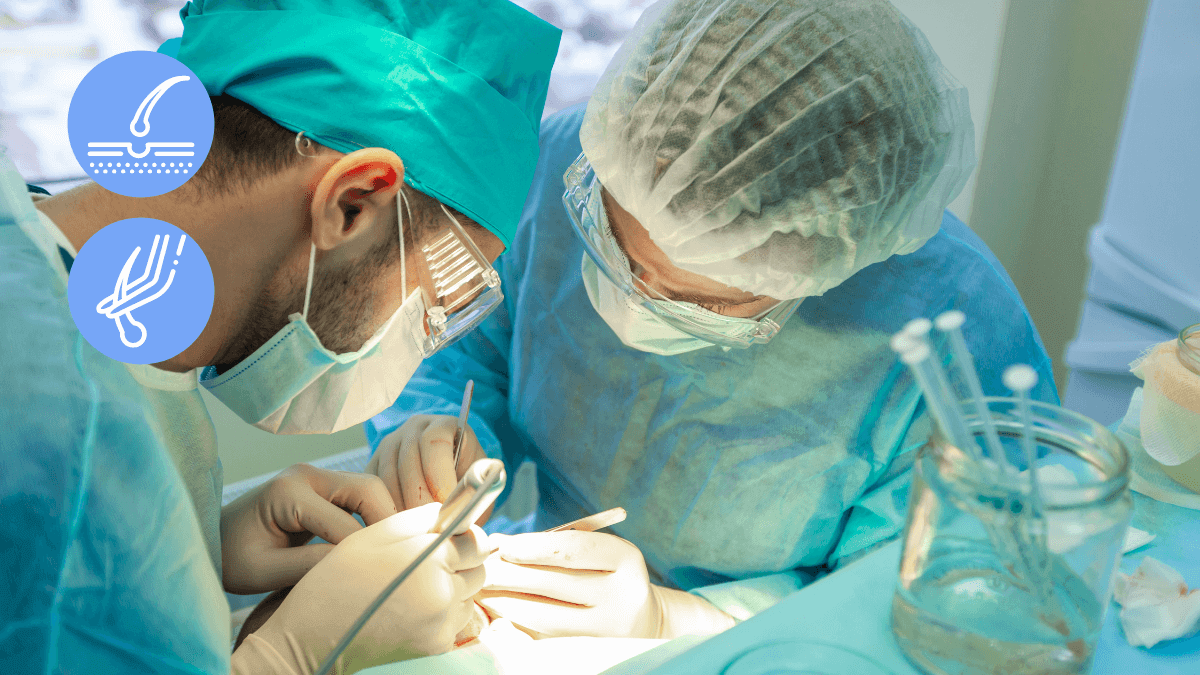

Thanks for posting. I really enjoyed reading it, especially because it addressed my problem. It helped me a lot and I hope it will help others too.
Hi,
Glad you liked the post.
Best.
May I have information on the topic of your article?
Hello,
Of course. Please contact my colleague for your questions.
Best.
Can DHI cause Cobblestoning in the case of a Beard transplant ?
Is DHI good for beard transplant surgery ?
Hi Harry,
If the doctor performs the hair transplant surgery correctly and uses high-quality equipment in good condition, there should be no visible scarring after a DHI procedure.
Yes, DHI is a great method for beard hair transplant surgery.
Best.